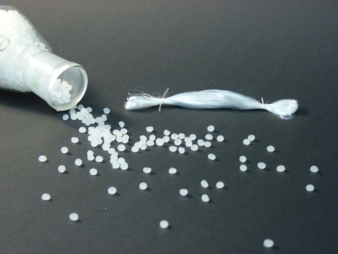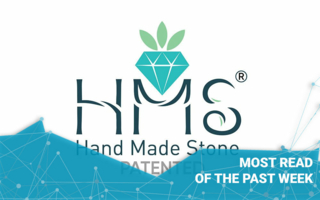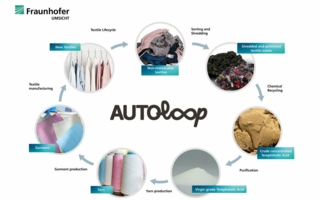13/04/2016 – ITCF Denkendorf — auf Deutsch lesen
Alternatives to Oil
New research initiatives for sustainability issues should not only deliver approaches to solving global challenges, they should also ensure the sustainability of the country through new technology and the distribution of new innovations.
The Federal Government has also defined "future projects": topical areas that are the focus of future research politics. One of these topical areas describes the use of renewable resources as an alternative to oil. The Denkendorf Institute for Textile Chemistry and Chemical Fibers has taken on this future-oriented project in numerous areas of research. Individual projects exemplify how research can serve two purposes: the use of new, natural resources goes hand-in-hand with the development of new procedures and facilities.
Chitin is a renewable resource and the second most common biopolymer in the world. Annually, the shrimp fishing industry worldwide produces waste products amounting to around 40,000 tons of chitin. Chitin, and especially the by-product chitosan, which is derived from it, has been used in numerous areas of industry for many years: Their use in the food industry, pharmaceuticals, fertilizer and for clarifying sewage represent only a few examples. The inadequate solubility properties of chitin have made its use in textile products problematic in the past.
However, with the help of the relatively new substance group of ionic liquids, new possibilities for technical processing of chitin have been created at the ITCF Denkendorf. The resultant product is a transparent, flexible and purely biological foil that can be used as a coating for textiles. Through a suitable coagulation process, the structures and properties of this foil can be purposefully influenced. For the first time, these films represent a purely biological and sustainable alternative to the established coatings which are mostly derived from petroleum-based plastics.
The development of carbon fibers has been the focus of research at ITCF for over ten years. Besides improving characteristic physical values and economically optimizing the manufacturing process, this area of research focuses on sustainability. Although until now, the use of polyacrylonitrile (PAN) has been in the foreground on an industrial scale, in recent years alternative source materials have been considered as well.
At ITCF, the use of lignin has been studied as part of comprehensive studies and research work. This purely vegetable material belongs to the most common organic compounds. Lignin has already been successfully reformed into a spinnable polymer, the first fibers have been spun from it and carbon fibers have been produced from it. The optimization of these fibers has been explored in further research projects. This project aims to produce technically high-performance fibers with special properties from renewable resources.
Yarns and textiles from biopolymer polylactic acids (PLA) are synthetic polymers that are completely biologically degradable. Using lactic acids, as a source product, these synthetic materials can be produced biotechnologically, via fermentation of carbohydrates (sugar, starch) or synthetically, from petrochemical resources. This means that products from PLA can be represented in a closed biological recycling process. PLA can be further processed technically by being "compounded," i.e. conditioned by the addition of aggregates. Through this conditioning, PLA blends are obtained: synthetics that are tailor-made for specific uses.
At ITCF Denkendorf, a special compounding represents the first steps to producing biologically degradable agrotextiles. It should be possible to spin this modified resource into fibers in a melt spinning process, and it should also exhibit additional optimized properties such as the crystallization behavior. In a second step, the extrusion and winding process can be optimized. This results in a storage-stable yarn that can easily be processed further. It was possible to spin this into a prototype textile which is now being produced for commercial use by an industry partner.




